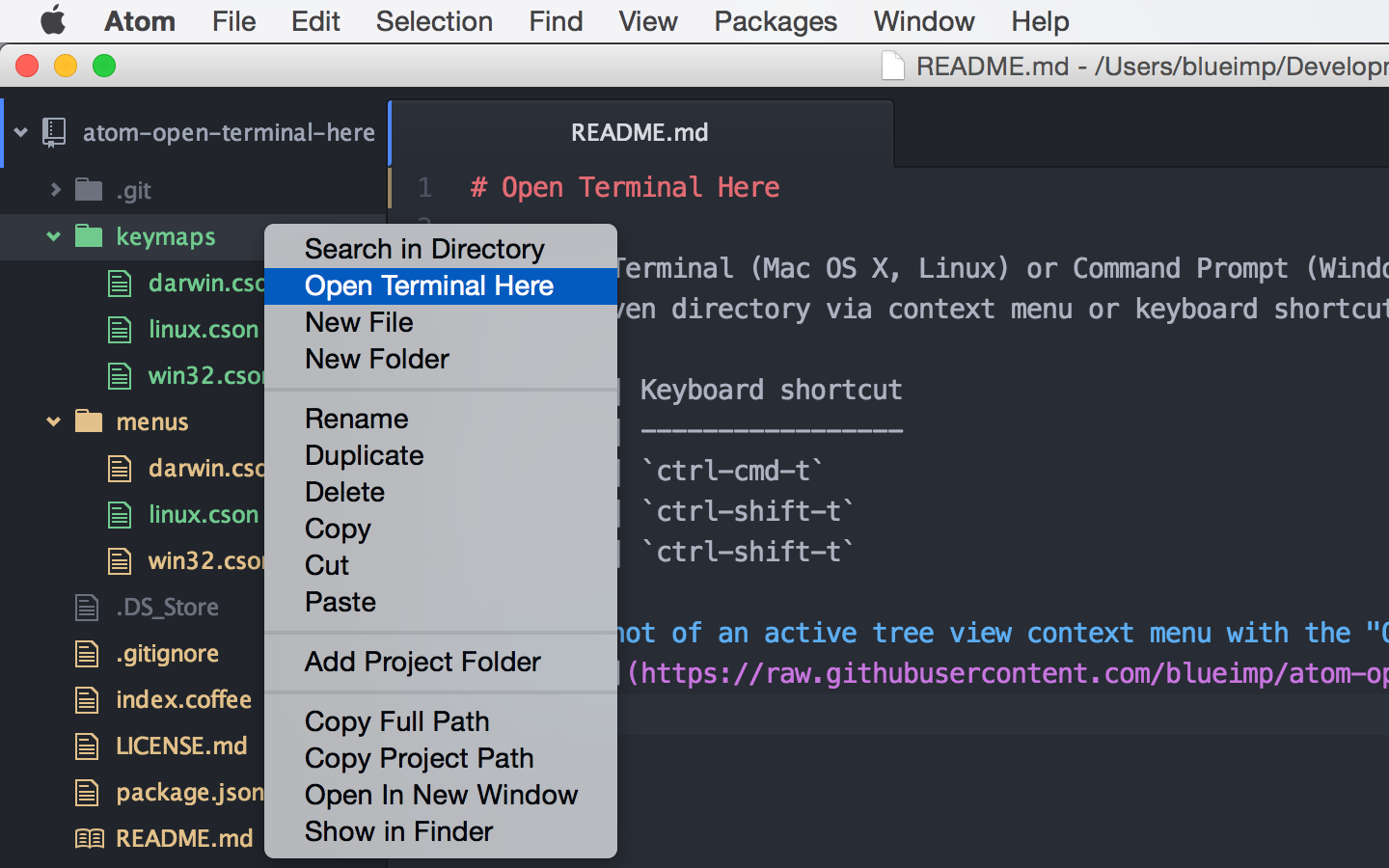


#Macos finder open terminal here mac os x
The first two scripts have two advantages compared to the services added in 10.7: As of Mac OS X Lion 10.7, Terminal provides Services for opening a new terminal window or tab at the selected folder in Finder. Tell (launch session "Default") of result to write text "cd " & quoted form of p Tell application "System Events" to keystroke "t" using command downĪlways create a new tab (iTerm 2): tell application "Finder" to set p to POSIX path of (insertion location as alias) Reuse an existing tab or create a new tab (Terminal): tell application "Finder" to set p to POSIX path of (insertion location as alias) Utilities are usually in a separate folder called ' Other '. Click on the Launchpad icon, and a grid with applications and utilities will appear. Go to your Macs Dock and on the right section of it locate Launchpad. Replace original with the current directory and new with the name of the directory to which you want to copy the contents. Type in the following command: ditto -V /original/folder/ /new/folder/. Copying contents from one place to another is fairly easy with Terminal. If (exists window 1) and not busy of window 1 thenĭo script "cd " & quoted form of p in window 1 To open Terminal using Launchpad, follow the steps below: 1. Copy contents from one folder to another. Reuse an existing tab or create a new window (Terminal): tell application "Finder" to set p to POSIX path of (insertion location as alias) You could also assign a shortcut to a script like the ones below.

The former also understands man page references ("open(2)"), man page command line arguments ("2 open") and man page URLs ("x-man-page://2/open").Ĭd "$(osascript -e 'tell app "Finder" to POSIX path of (insertion location as alias)')" On a related note, Lion Terminal also has new Services for looking up man pages: Open man page in Terminal displays the selected man page topic in a new terminal window, and Search man Pages in Terminal performs "apropos" on the selected text. This is the command-line equivalent of dragging a folder/pathname onto the Terminal application icon. You can also do this from the command line or a shell script: open -a Terminal /path/to/folder (Dragging into the terminal view within the tab merely inserts the pathname on its own, as in older versions of Terminal.) In addition, Lion Terminal will open a new terminal window if you drag a folder (or pathname) onto the Terminal application icon, and you can also drag to the tab bar of an existing window to create a new tab.įinally, if you drag a folder or pathname onto a tab (in the tab bar) and the foreground process is the shell, it will automatically execute a "cd" command. Go back to the parent folder, select the relevant folder, then activate the service via the Services menu or context menu. You cannot simply have the folder open and run the service "in place". The New Terminal at Folder service will become active when you select a folder in Finder. Services appear in the Services submenu of each application menu, and within the contextual menu (Control-Click or Right-Click on a folder or pathname). You can even assign command keys to them. If you are using Mac OS X 10.3 or later, delete the preferences for the Finder. These Services work in all applications, not just Finder, and they operate on folders as well as absolute pathnames selected in text. Oopen Terminal, located in the Applications > Utilities folder. There's also New Terminal Tab at Folder, which will create a tab in the frontmost Terminal window (if any, else it will create a new window). System Preferences > Keyboard > Shortcuts > ServicesĮnable New Terminal at Folder. As with most Services, these are disabled by default, so you'll need to enable this to make it appear in the Services menu. Type ls and press the Return key, and you’ll see the folders (and/or files) in the current directory.As of Mac OS X Lion 10.7, Terminal includes exactly this functionality as a Service. To do that you use the ls (or list) command. While you’re there-or when you’re in any folder ( directory in Unix-speak)-you might want to know what’s in it. When you first get to the command line, you’re in your home folder. The % is a character that the shell (the default interface that Terminal uses) displays to indicate that it’s ready to accept a command.(In the Finder, that’s the folder with your user name and the house icon.)

~ is a shortcut that means the current user’s Home folder. The ~ shows where you are in the file system of the Mac.Mac-Pro-8 is the name of the Mac (same as the Computer Name in the Sharing pane of System Preferences).In the prompt above romansempire is the user name.The second line is the prompt, and while it can change from system to system depending on configuration, by default it contains several bits of information:.The first line shows the last time you logged into your Mac via the command line that’s the current time, when you’re using Terminal.


 0 kommentar(er)
0 kommentar(er)
